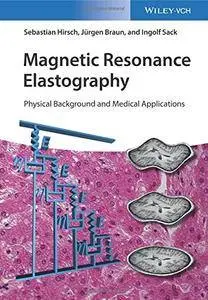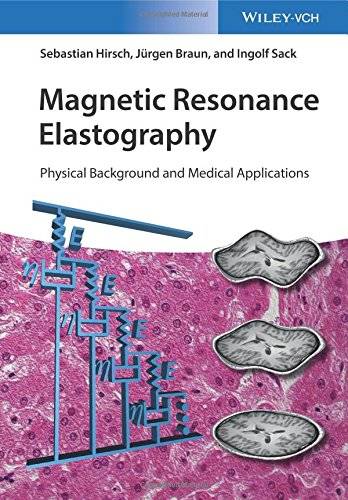Magnetic Resonance Elastography: Physical Background and Medical Applications
Wiley VCH | English | February 2017 | ISBN-10: 3527340084 | 456 pages | PDF | 12.78 mb
Wiley VCH | English | February 2017 | ISBN-10: 3527340084 | 456 pages | PDF | 12.78 mb
by Sebastian Hirsch (Author), Jurgen Braun (Author), Ingolf Sack (Author)
Magnetic resonance elastography (MRE) is a medical imaging technique that combines magnetic resonance imaging (MRI) with mechanical vibrations to generate maps of viscoelastic properties of biological tissue. It serves as a non-invasive tool to detect and quantify mechanical changes in tissue structure, which can be symptoms or causes of various diseases. Clinical and research applications of MRE include staging of liver fibrosis, assessment of tumor stiffness and investigation of neurodegenerative diseases.
The first part of this book is dedicated to the physical and technological principles underlying MRE, with an introduction to MRI physics, viscoelasticity theory and classical waves, as well as vibration generation, image acquisition and viscoelastic parameter reconstruction.
The second part of the book focuses on clinical applications of MRE to various organs. Each section starts with a discussion of the specific properties of the organ, followed by an extensive overview of clinical and preclinical studies that have been performed, tabulating reference values from published literature. The book is completed by a chapter discussing technical aspects of elastography methods based on ultrasound.
About the Author
Ingolf Sack is professor for Experimental Radiology and Elastography at Charit? - Universit?tsmedizin Berlin, Germany. He received a PhD in Chemistry at Freie Universit?t Berlin, Germany, for the development of methods in NMR spectroscopy. He worked at the Weizmann Institute in Rehovot, Israel, and at the Sunnybrook Hospital Toronto, Canada. Since 2003 he leads an interdisciplinary team of physicists, engineers, chemists and physicians which has pioneered pivotal developments in time-harmonic elastography of both MRI and ultrasound for many medical applications.
Sebastian Hirsch is a postdoctoral fellow in the Department of Radiology at the Charit? - Universit?tsmedizin Berlin, Germany. After studying physics at the University of Mainz, Germany, he joined Charit?, where he works on pressure-sensitive MRE and the development of data acquisition strategies.
Jürgen Braun is an assistant professor at the Charit? - Universit?tsmedizin Berlin, Germany. He received his PhD degree in physical chemistry from Albert-Ludwigs-University in Freiburg, Germany, for the elucidation of reaction kinetics with liquid and solid state NMR. He possesses long standing professional experience in elastography, medical engineering, and image processing.



